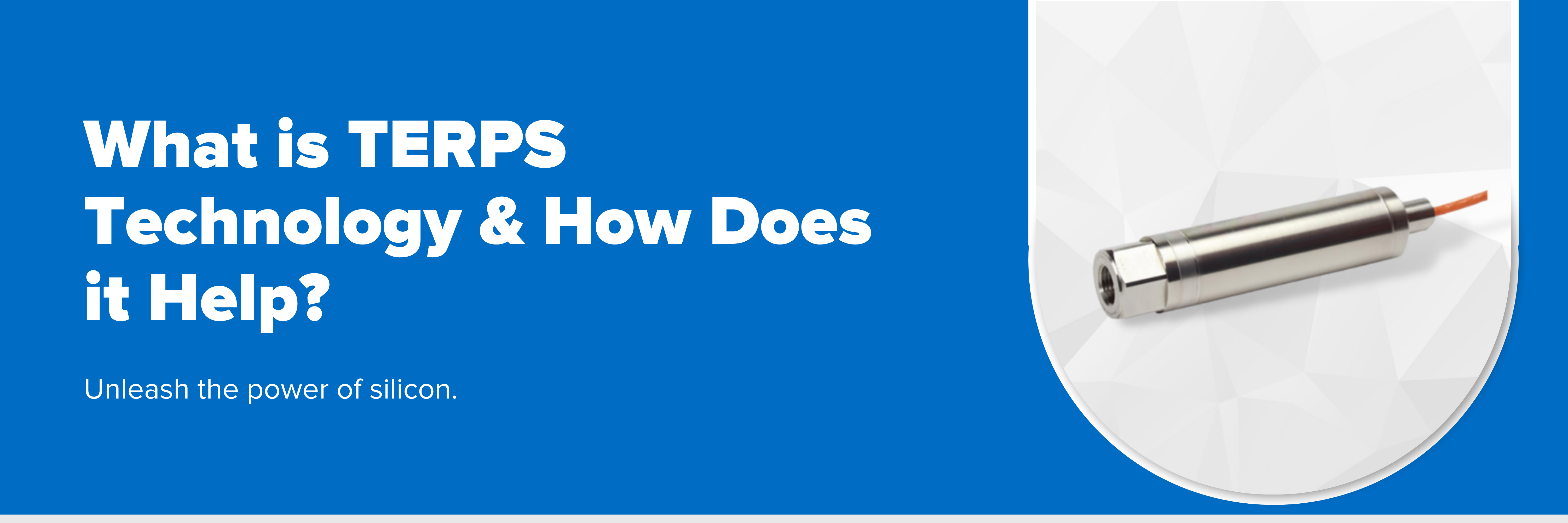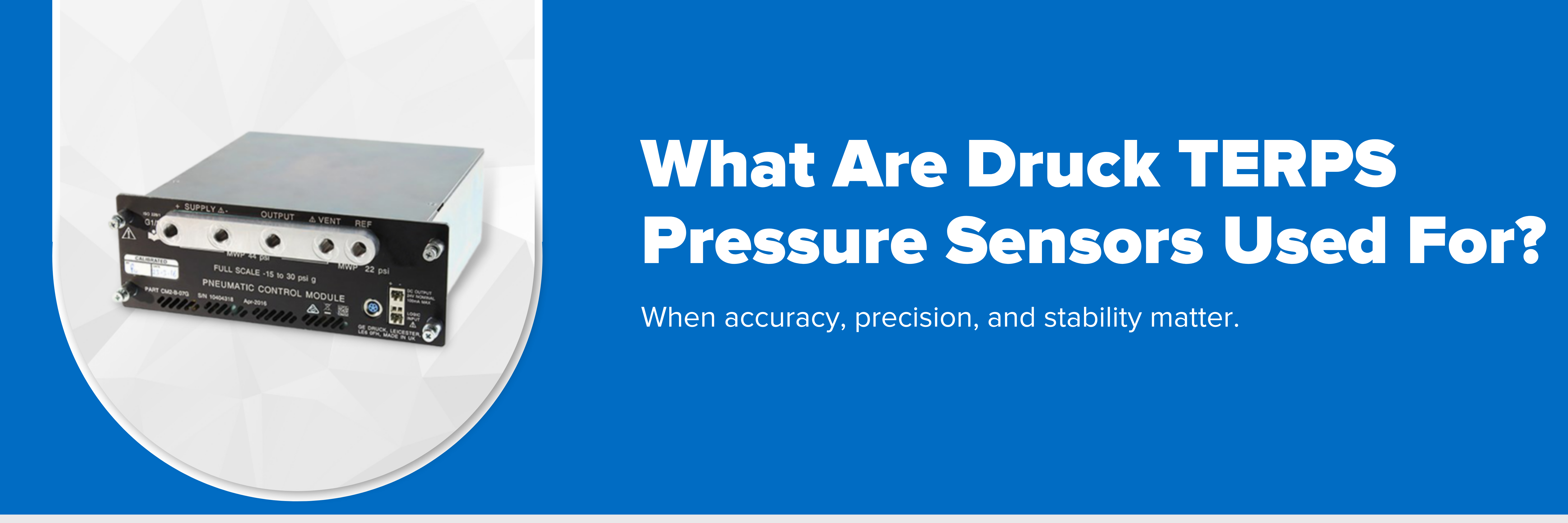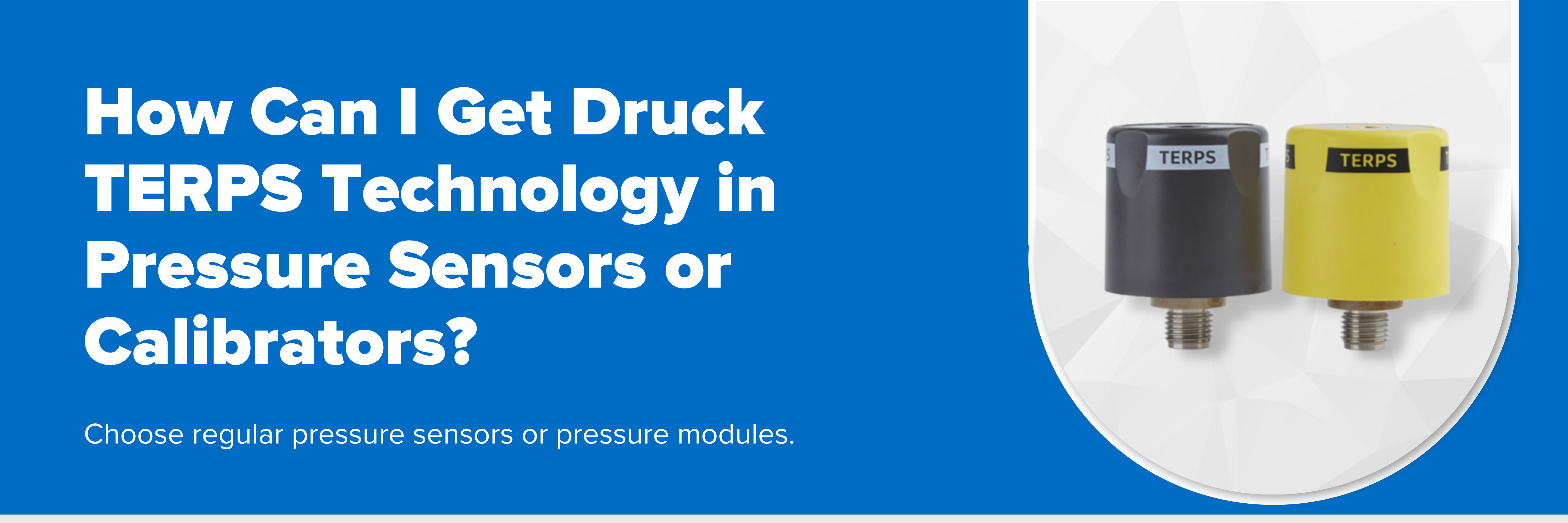How TERPS Technology Improves Pressure Sensor Performance
Two of the most important factors for the performance of pressure sensors are accuracy and stability. There are many different brands and types of pressure sensors that suit different applications, but when the environment becomes harsher and demands of the pressure sensor increase, the technology inside the sensor is what matters. The right pressure sensor can extend recalibration periods, improve your test data, cut downtime, and maintain accuracy in robust environments.

What is TERPS Technology & How Does it Help?
TERPS–Trench Etched Resonant Pressure Sensors–is a silicon sensing technology developed by Druck. Quartz pressure sensors are well known for their accuracy, but there are a few technological advantages to the silicon technology used in TERPS pressure sensors. The silicon’s elasticity and single-crystalline structure allow for lower hysteresis and repeatability errors while providing long-term stability. The properties of the silicon also allow the pressure sensor to be used over a wide temperature range.
TERPS pressure sensors also utilize silicon fusion bonding for the sensor’s resonator element. Normally, the resonator and diaphragm are manufactured from the same piece of silicon. In TERPS sensors, the silicon fusion bonding allows each layer to be made individually: the diaphragm, the resonator, and the cap. The larger diaphragm allows the pressure sensor to meet the demands of high-pressure applications. This sort of manufacturing is made possible through Deep Reactive Ion Etching (DRIE). DRIE also enables the resonator to be made in a horizontal plane, increasing rigidity and mechanical balance while minimizing energy losses.
Frequency detection is a very important performance factor for pressure sensors. The higher the signal, the better. TERPS technology utilizes a lever design that produces a higher signal from smaller movements. This design enables the sensor to use glass-to-metal seals suitable for harsh environments. The higher signal is also above the ambient noise level, which means there is less interference and allows the TERPS sensor to be placed further away from electronics.

What Are Druck TERPS Pressure Sensors Used For?
Druck designed these pressure sensors to be used when accuracy, stability, and reliability are all critical to process measurement and data quality. The technology inside the sensor enables it to be used in harsh environments. For example, TERPS works as a pressure sensor for aggressive saltwater applications due to its Hastelloy wetted parts. This includes oil and gas seabed monitoring that requires increased accuracy, tidal level monitoring for sea defense strategies, or even critical tsunami level monitoring. The wide temperature range from TERPS also makes it suitable as a pressure sensor for ship ballast tanks or steam turbines. Or, if you need a pressure sensor for turbine generators, TERPS technology allows it to be installed close to the measuring point without sacrificing data quality which can normally happen with long distances between the sensor and associated electronics.

How Can I Get Druck TERPS Technology in Pressure Sensors or Calibrators?
Druck’s TERPS technology for pressure sensors comes in typical sensor product offerings with a range of cable options based on what your application requires.
- Druck RPS/DPS 8000 Pressure Sensor
- Pressure ranges up to 2,900 PSI
- Temperature ranges from -40 to 257 F
- Druck RPS/DPS 8100 Pressure Sensor
- Pressure ranges from 1 to 50 PSI
- Druck RPS/DPS 8200 Pressure Sensor
- Suitable for harsh environments
- Pressure ranges up to 1,000 PSI
- Druck RPS/DPS 8300 Pressure Sensor
- Suitable for harsh environments
- Pressure ranges up to 1,000 PSI
In addition to these offerings, there are Druck PM620 TERPS Pressure Modules which allow the technology to be incorporated into a wide range of Druck pressure products such as multifunction calibrators or pressure stations. The PM620 Pressure Module works with:
- Druck DPI 612 Flex Series Pressure Calibrator
- Druck DPI 620 Genii Multifunction Calibrator
- Druck DPI 620 Genii-IS Multifunction Calibrator
- Druck PV620G Pressure Station
- Druck PV620-IS Pressure Station
Druck also offers the CM3 Pressure Module for its PACE5000 and PACE6000 Modular Pressure Controller. The TERPS technology in the CM3 Pressure Module drastically increases the precision of the controller. The standard module has 0.005% FS stability whereas the TERPS CM3 module has 0.001% FS stability.

Still Need Help? Call an Engineer Today.
There is a lot to consider when choosing the right pressure sensor. Our team of 20+ application engineers has over 300 years of combined experience helping customers find the right industrial instrumentation for their applications. Give them a call at 1-800-884-4967 today. Or, you can shop for a wide range of pressure instrumentation from top brands and even configure your product online. We offer free lifetime tech support with every product sold.









